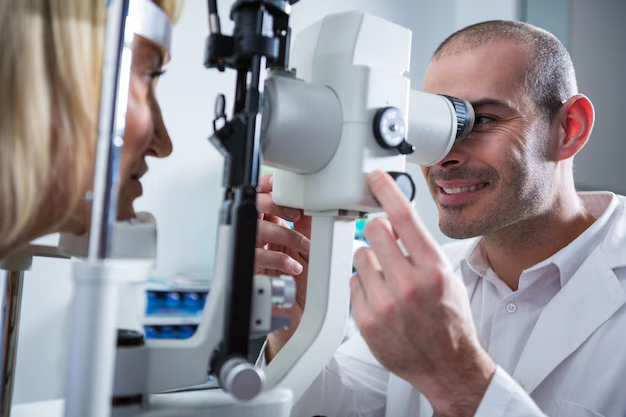What Really Causes Cataracts? Shining a Light on Eye Health
Cataracts affect countless individuals globally, gradually clouding vision and complicating daily life. Yet, despite their prevalence, the causes of cataracts remain somewhat overlooked. Understanding the underlying factors contributing to this common eye condition is essential for maintaining eye health and could potentially slow its progression. Let's delve into the world of cataracts, their causes, and how these may be addressed to preserve vision.
Understanding Cataracts: A Brief Overview
To explore the causes, let's first clarify what cataracts are. A cataract forms when the eye's natural lens becomes cloudy, leading to blurred vision, glare sensitivity, and difficulty seeing at night. This condition is a leading cause of blindness, but it is highly treatable, especially when detected early. While they primarily affect older adults, cataracts can occur at any age due to various causes and risk factors.
Aging: The Primary Culprit
Age-Related Changes
As we age, changes naturally occur in the eyes that can lead to cataract formation. Proteins in the lens begin to break down and clump together, creating clouded areas. These changes usually develop slowly, and many people start to notice them post-60.
The Role of Oxidative Stress 👴
Oxidative stress refers to damage caused by free radicals—unstable atoms that harm cells and contribute to aging and cataract formation. Antioxidants can neutralize free radicals, so maintaining a diet rich in antioxidants might help mitigate this process.
Takeaway: Consuming antioxidant-rich foods like berries, nuts, and leafy greens can support lens health.
Other Factors Influencing Cataract Development
Genetic Predisposition
While age is a significant factor, genetic predispositions can also play a role. Some individuals may have a family history that makes them more susceptible to cataracts.
Health Conditions 🩺
Certain systemic diseases, like diabetes, can accelerate cataract formation. The link between high blood sugar levels and oxidative stress can expedite deterioration in the lens.
Diabetes: This condition increases the risk of cataracts significantly due to higher glucose levels affecting lens transparency.
Hypertension: High blood pressure can contribute to cataract development by affecting blood flow to the eyes.
Medication Use
Some medications, particularly corticosteroids, have been associated with an increased risk of cataracts. It's crucial to discuss potential side effects with healthcare providers.
Practical Tip: Regular eye exams become critical, especially for individuals managing chronic conditions or on long-term medication.
Lifestyle and Environmental Influences
Excessive Sun Exposure ☀️
Ultraviolet (UV) radiation from the sun can cause changes in eye tissue, leading to cataracts. Wearing sunglasses with UV protection can reduce this risk dramatically.
Sun Safety Tips:
- Always choose sunglasses blocking 99-100% of UV rays.
- Wear a wide-brimmed hat for added protection.
Smoking and Alcohol Consumption 🚬
Smoking is a controllable risk factor, as studies show smokers have a higher incidence of cataracts. Quitting smoking not only benefits overall health but also reduces cataract risk.
Similarly, excessive alcohol consumption has been linked to increased cataract risk. Moderation is key for maintaining eye health.
Nutritional Deficiencies
Deficiencies in certain vitamins and minerals can influence cataract development. For instance, low levels of vitamins C and E may impact lens clarity.
Dietary Advice: Incorporate varied diets rich in vitamins A, C, and E, along with minerals like zinc and selenium.
Congenital Cataracts
While rare, congenital cataracts occur in newborns and infants, often due to genetic conditions, infections during pregnancy, or metabolic issues. Early intervention can save or considerably improve vision in these cases.
Preventive Measures and Next Steps
Regular Eye Examinations 👁️🗨️
Regular comprehensive eye exams can help catch cataracts early. It's important to maintain scheduled visits especially after the age of 40.
Healthy Diet and Lifestyle Choices
Promoting a lifestyle centered around nutrition and wellness can delay or prevent cataracts. This entails:
- Balanced Diet: Emphasize fruits, vegetables, nuts, and fish.
- Regular Exercise: Keeps weight and blood pressure in check, reducing risk factors indirectly.
- Avoiding Harmful Substances: Smoking cessation and alcohol moderation.
Sunglasses and Protective Eyewear
Investing in quality sunglasses and eyewear can help minimize UV exposure. This simple step offers long-term protective benefits.
Summary: Key Takeaways to Protect Your Vision
- Age and Genetics: The unavoidable factors in cataract formation, yet awareness and monitoring can mitigate effects.
- Health and Nutrition: Managing diseases and maintaining a nutrient-rich diet are critical.
- Lifestyle Choices: Reducing harmful habits and embracing sun protection benefits eye health.
🔍 Quick Tips for Cataract Prevention:
- 🤓 Routine Check-ups: Eye examinations every 1-2 years after 40.
- 🥕 Nourish Your Body: Prioritize vitamins C and E, omega-3 fatty acids.
- 🌞 Shade Your Eyes: High-quality sunglasses for UV protection.
- 🚭 Remove Risk Factors: Quit smoking and limit alcohol intake.
Weaving together age-related, genetic, lifestyle, and environmental factors forms a comprehensive understanding of cataract causation. By focusing on these areas, individuals can make informed decisions aimed at safeguarding their vision for the future. Understanding what causes cataracts empowers everyone to take proactive measures in maintaining eye health across the lifespan.
